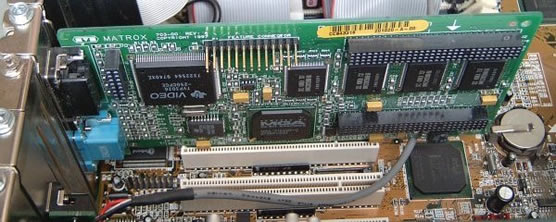Assuming your new card uses the same type of slot as the current one, simply swap the old card for the new. Carefully line the new card up with its slot and push it down firmly and evenly. Note, the system will not boot up if the new card is not properly seated. Affix the card using the backplate screw you removed previously. Close up the case and reconnect the cables.


A modern-day graphics card typically comes with the following connectors:
- an IBM Standard Analogue VGA Monitor jack
- an S-Video Output connector
- a DVI-I Monitor connector
The IBM Standard VGA OUT connector – also referred to as a DB-15 connector – uses three rows of pins and has, for many years, been the standard way of connecting an analogue CRT monitor to a display adapter. Some flat-panel devices (which incorporate an analogue-to-digital conversion) may also connect to the display adapter using this jack.
The 7-pin S-Video Output connector is used to connect devices such as Televisions and VCRs to the card for outputting the same image as being displayed on the monitor. It accepts either a 4-pin or 7-pin S-Video cable. Devices using composite connectors can also be connected, via an S-Video to Composite Adapter.
The DVI-I connector is used to connect a DVI capable monitor to the card. A standard VGA monitor can also be connected, via a DVI-I to VGA adapter.
Typically, two display devices may be connected concurrently, each having independent resolutions and refresh rates.